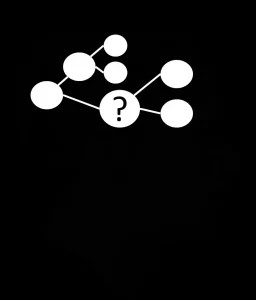Concept maps are visual representations of knowledge, connecting ideas and concepts in a clear, structured way. They use nodes to represent concepts and labeled links to illustrate the relationships between them. From simple to complex topics, concept maps can capture, communicate, and simplify understanding. But How Do Concept Maps Help Learning? Research shows they offer at least three key benefits: building better understanding, promoting realistic self-assessment, and guiding focused review.
 A simple concept map illustrating the core components and benefits of using concept maps for learning.
A simple concept map illustrating the core components and benefits of using concept maps for learning.
1. Fostering Deeper Understanding Through Connections
Concept mapping enhances learning by facilitating the creation of connections between new information and existing knowledge. This active learning process encourages deeper understanding and improved retention. A review by Nesbit and Adesope (2006) found strong evidence that using concept maps during study significantly improves both recall and comprehension. By visually representing the relationships between ideas, concept maps solidify understanding and make learning more meaningful. The process of constructing a concept map reinforces these connections, solidifying the learning process.
2. Promoting Accurate Self-Assessment of Knowledge
Often, individuals struggle to accurately gauge their understanding of a topic. This “metacomprehension,” or awareness of one’s own understanding, is crucial for effective learning. Research by Redford et al. (2012) demonstrated that concept mapping improves metacomprehension accuracy. In their study, 7th graders who created concept maps were more accurate in predicting their test performance than those who simply reread the material. Concept maps provide a tangible representation of knowledge, allowing learners to identify areas of strength and weakness more effectively. This visual snapshot enables a more realistic self-assessment of understanding, paving the way for targeted review and improvement.
3. Guiding Focused Review and Addressing Knowledge Gaps
While simply creating concept maps may not automatically lead to higher test scores, their real power lies in guiding focused review. Redford’s study suggests that students who used concept maps didn’t perform better on tests initially because they lacked the opportunity to restudy identified weak areas. Concept maps highlight gaps in understanding, enabling learners to pinpoint specific topics requiring further attention. By revisiting these areas, either by revising the original map or creating a new one, learners can strengthen their understanding and improve their overall performance.
Conclusion: Concept Maps – A Powerful Tool for Effective Learning
Concept maps are a versatile learning tool that fosters deeper understanding, promotes accurate self-assessment, and guides focused review. By visually representing knowledge and its interconnections, concept maps empower learners to take control of their learning process and achieve better outcomes. Incorporating concept mapping into your study routine can be as simple as replacing doodles with meaningful diagrams. Experiment with different concept mapping techniques to discover what works best for you and unlock the potential of this powerful learning strategy.
References
Nesbit, J., & Adesope, O. (2006). Learning With Concept and Knowledge Maps: A Meta-Analysis. Review of Educational Research, 76(3), 413-448.
Redford, J., Thiede, K., Wiley, J., & Griffin, T. (2012). Concept mapping improves metacomprehension accuracy among 7th graders. Learning and Instruction, 22(4), 262-270.